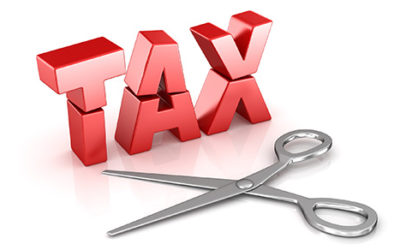On March 18, 2020, shortly after it was passed in the Senate, President Trump signed H.R. 6201, the Families First Coronavirus Response Act (the “Act”) into law. The new law takes effect on April 2, 2020 and will remain effective until December 31, 2020. The bill provides paid sick leave and free coronavirus testing, expands food assistance and unemployment benefits, and requires employers to provide additional protections for health care workers. This article focuses on the Emergency Paid Sick Leave and expanded Family and Medical Leave Act provisions. These provisions apply to all employers with fewer than 500 employees, although employers with fewer than 50 employees may later be deemed exempt if the Families First Coronavirus Response Act would jeopardize the business’s viability.
Emergency Paid Sick Leave Act (EPSLA)
Benefit:
- Provides qualified full-time employees up to 80 hours of fully paid time off, and qualified part time employees of fully paid time off for the typical number of hours they work in a typical two-week period. Eligible employees will receive paid sick leave at their regular rate, except that in no event shall the amount paid exceed $511 per day and $5,110 in total, to self-quarantine, seek a diagnosis or preventive care, or receive treatment for COVID-19.
- Provides qualified full-time employees up to 80 hours of paid time off at two-thirds of the employee’s regular rate, and qualified part time employees of paid time off at two-thirds of the employee’s regular rate for the typical number of hours they work in a typical two-week period. In no event shall the amount paid exceed $200 per day and $2,000 in total, to care for a family member or to care for a child whose school has closed, or if their child care provider is unavailable due to COVID-19.
Qualifying reasons for taking paid sick leave include:
- The worker has a current diagnosis of COVID-19.
- The worker is quarantined (including self-imposed quarantine), at the instruction of a health care provider, employer, or government official, to prevent the spread of COVID19.
- The worker is caring for another person who has COVID-19 or who is under a quarantine related to COVID-19.
- The worker is caring for a child or other individual who is unable to care for themselves due to the COVID-19-related closing of their school, childcare facility, or other care program.
Eligibility:
- Employees at companies with fewer than 500 employees,
- Local, state, and federal government employees, and
- Employees who work under a multiemployer collective agreement and whose employers pay into a multiemployer plan.
- Employers of employees who are health care providers or emergency responders may elect to exclude those employees from the emergency sick leave provisions.
Use:
- Employers with existing paid leave policies will be required to provide workers with the sick leave under this emergency program. An employer cannot require a worker to use any other available paid leave before using the sick time.
- Employers will be prohibited from (i) requiring workers to find replacements to cover their hours during time off; or (ii) discharging or discriminating against workers for requesting paid sick leave or filing a complaint against the employer related to such.
Notifying employees:
- Employers will have to post a notice containing information regarding the emergency sick leave provisions by March 25th.
Emergency Family and Medical Leave Expansion Act (EFMLEA)
Benefit:
The EFMLEA amends the Family and Medical Leave Act of 1993 (FMLA), which provides 12 weeks of protected unpaid leave.
- Eligible full-time employees and part-time employees are entitled to 12 weeks of job-protected leave to take care for their children in the event of a school closure or their childcare provider is unavailable due to COVID-19.
- The 12 weeks of job-protected leave include two weeks of unpaid leave, followed by 10 weeks of paid leave. Eligible employees may elect or be required to overlap the initial two weeks of unpaid leave with two weeks of other paid leave they have available. Eligible employees will receive a benefit from their employers that will be no less than two-thirds of the employee’s usual pay. The paid leave is capped at $200 per day and $10,000 in the aggregate.
EFMLEA has a special provision that gives the Department of Labor explicit authority to create regulations that would:
- “exempt small businesses with fewer than 50 employees from the requirements of the EFMLEA when the imposition of such requirements would jeopardize the viability of the business as a going concern.”
Eligibility:
- Employees at companies with fewer than 500 employees,
- Local, state, and federal government employees, and
- Employees who work under a multiemployer collective agreement and whose employers pay into a multiemployer plan.
- Employees must have been on the job for at least 30 days, and who are unable to work or telework because they have to care for a minor child if the child’s school or place of care has been closed, or if the child care provider of that child is unavailable due to a coronavirus emergency
- An employer of an employee who is a health care provider or an emergency responder may elect to exclude the employee from the emergency family leave provisions.
Use:
- Generally, the employee on leave must be restored to his or her prior position; however, this requirement does not apply to employers with fewer than 25 employees if the position held by the employee on leave no longer exists due to economic conditions or other changes in the employer’s operating conditions caused by the coronavirus pandemic, and the employer makes reasonable efforts to restore the employee to an equivalent position.
Who’s Paying For This?
Refundable credits for the 6.2 percent employer portion of the Social Security tax will be provided to employers to cover wages paid to employees for time off under the above sick leave and family leave programs.
- The sick leave credit for each employee will be for wages (including qualified health plan expenses relating to those wages) of up to $511 per day while the employee is receiving paid sick leave to care for himself or herself, or $200 if caring for a family member or child whose school has closed. The credit will be limited to 10 days per employee per quarter.
- The family leave credit for each employee will be for wages (including qualified health plan expenses relating to those wages) of as much as $200 per employee per day, and $10,000 in the aggregate for all calendar quarters. Employers initially front the cost of emergency paid sick leave but will be fully reimbursed by the federal government within three months.
- Employers will submit as part of their estimated quarterly tax payments. If employer’s costs more than offset their tax liability, they will get a refund from the IRS.
- To prevent a double benefit, employers must include the amount of credits received in their gross income.
- Wages required to be paid under the emergency sick leave provisions will not be subject to the 6.2 percent social security payroll tax typically paid by employers on employees’ wages.
The Bottom Line
It’s time to act quickly to amend policies and train employees to ensure that employee leaves are administered in accordance with the new Families First Coronavirus Response Act. Contact us for more info!
This information contained herein is general in nature and is not intended, and should not be construed, as legal, accounting or tax advice or opinion provided by Hare CPAs + Business Advisors to the reader. The reader also is cautioned that this material may not be applicable to, or suitable for, the reader’s specific circumstances or needs, and may require consideration of non-tax and other tax factors if any action is to be contemplated. The reader should contact his or Hare CPAs + Business Advisors or other tax professional prior to taking any action based upon this information. Hare CPAs + Business Advisors assumes no obligation to inform the reader of any changes in tax laws or other factors that could affect the information contained herein.


